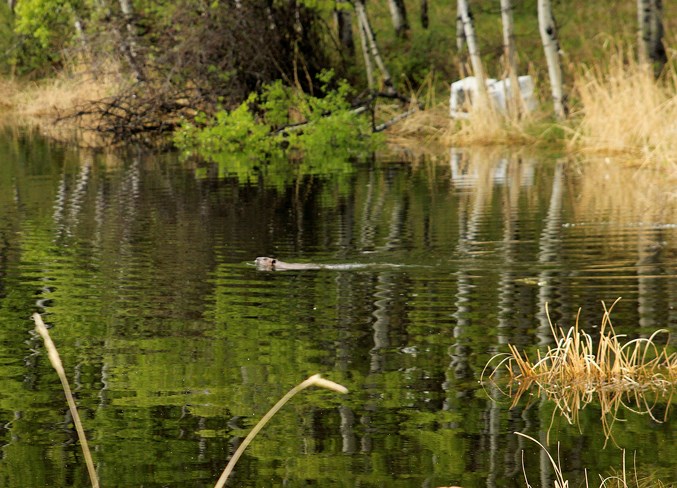At the Ann and Sandy Cross Conservation Area (ASCCA) south of Calgary, at the end a bumpy ride through a field to a secluded pond, a convoy of seven vehicles carried an eager group May 18 – conservationists, volunteers, media and two beavers about to be returned to the wild. After two years in the care of the Alberta Institute for Wildlife Conservation (AIWC), a female beaver was fit to enter the wild again, along with a male beaver it had formed a fairytale bond with. “It will be bittersweet,” said Holly Duvall, AIWC’s executive director, before releasing the pair. “It will be good that they go back to the wild, because that’s what we do, but it will definitely be a bit of a change for us, too.” The female beaver was one of the longest patients AIWC has ever had, Duvall said. It was a baby when it arrived at AIWC, and a video of the young beaver splashing its tail in a pool went viral. Last year, after being found in a storm drain, a male beaver was taken into AIWC care, and put in an enclosure next to the female. Duvall said volunteers who were out at night to feed the nocturnal mammals, found the two connecting through the chain-link fence. Surprised, Duvall said they reached out to animal rehab centres across Canada and the United States to seek advice on how to safely introduce the two. When they finally met, Duvall said, the beavers got along better than expected – so well, in fact, they were released together. Workers at ASCCA prepared a new home for the beavers, even pre-chopping aspen as food. On May 18, many of the people who had played a role in the care of the beavers – including AWIC staff, volunteers and their families, and donors – were ready to watch the beaver’s release. Just as things were about to get going, a worker walked out of the trees and said they had a problem – between the preparation and release, another beaver had snuck into the space. Huddled around Duvall’s Honda CR-V, which housed the caged beavers, the team hatched a new plan – one that was as stress-free as possible. “They’re going to be smelling new scents, they’re going to be hearing different sounds, so we don’t want to add anymore stress, and we want to give them time to get their bearings,” Duvall said. “We put so much into the animals’ rehabilitation, we don’t want to fail when it comes to the release, because that doesn’t set the animal up for success, either.” The team found a new area a few kilometers south of the original spot, where the beavers were eventually released. The male – who had more experience in the wild before being taken into care – was the first to embrace the pond. Eventually, the female joined in, too. Katrina Jensen, AIWC’s educational facilitator, said staff and volunteers try not to get attached to the wildlife AIWC takes in, because it doesn’t always work out. This is why they don’t name the animals, she added. But in the end, with the AIWC team, the ASCCA team, the donors and all the others lined up for a group photo, there was an evident sense of pride and excitement in getting their two “love-bird” beavers back where they belong. “It’s what it’s all about,” said one of the volunteers.



